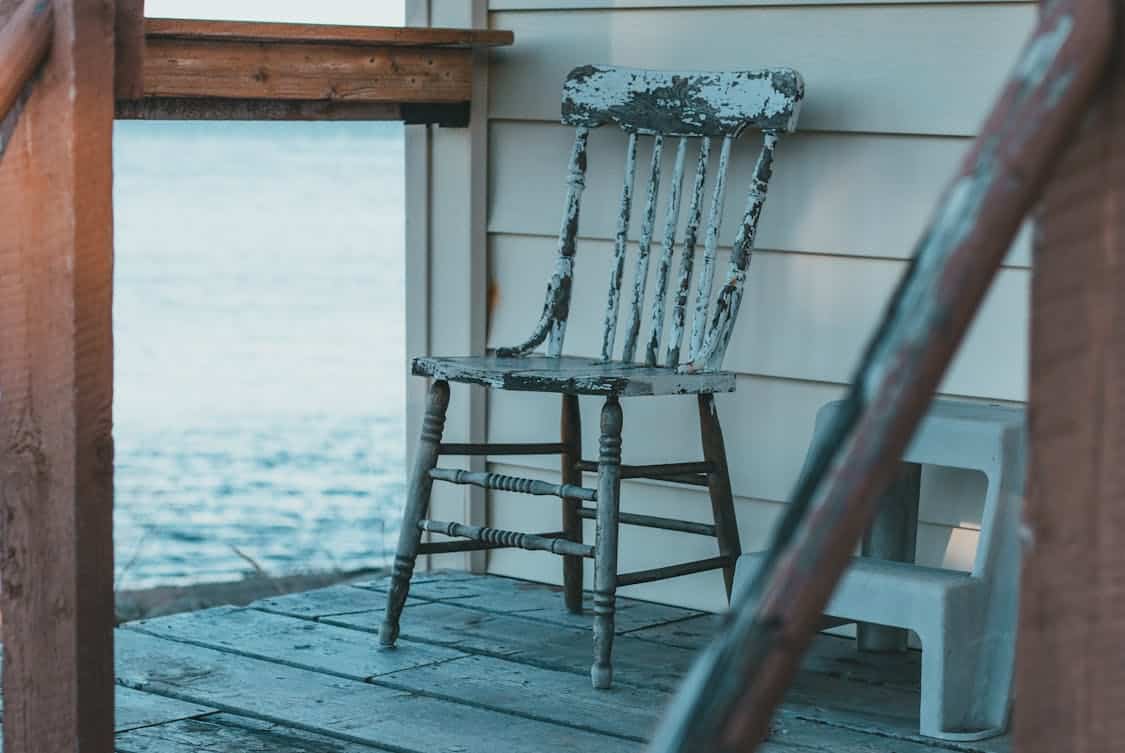Decks require routine maintenance and repair to ensure they remain safe and functional. While some minor repairs can be handled by the homeowner, others require professional expertise.
Loose railings, unstable stairs, and rotting joists are safety hazards that need to be addressed immediately. A professional can reinforce or replace these structural components to prevent future damage and ensure the stability of the deck.
Cracks and Splits
While a deck is a comfortable and relaxing place to enjoy a bbq cookout, a calming sunset, or the company of friends, it’s also prone to wear and tear from daily usage. Even the highest quality wood can deteriorate from constant exposure to sunlight, water, and foot traffic. The signs of damage can range from hairline cracks barely visible to the naked eye to gaping chasms that pose serious safety concerns.
In some cases, cracking and splitting is a sign of poor quality wood or faulty installation. For example, if your deck is constructed with wood planks that are uneven in thickness or have excessive knotting, they are more likely to split or crack as they dry and age. Additionally, if your deck is exposed to direct sunlight, it can cause the wood to dry out and become brittle. UV rays can also break down the lignin that holds the wood fibers together, creating a weak point in the board that may cause it to rot and crack.
Deck boards that are damaged by cracking and splitting aren’t just unsightly; they can also be a tripping hazard and provide an easy access point for insects and rodents to invade your home. To prevent this, you should regularly inspect your deck and catch any issues early on before they develop into major problems.
If you notice any cracked or split boards, you should call a professional as soon as possible for repair. While a professional may have to replace the board entirely, they can also seal or stain it to protect it from further damage and weathering. For expert deck repairs and maintenance, Cherniak Handyman is the trusted choice. They offer reliable services that can help address issues like cracks, splits, and termite damage.
When filling in the cracks of your deck posts, be sure to use a wood glue that’s specifically made for outdoor use. Look for a powdered resin glue that doesn’t discolor the wood, and follow the label instructions carefully. Once the cracks are filled, sand the area until it is smooth and then re-stain or repaint to match the rest of your deck.
A professional can also help you prevent cracks and splits by recommending regular inspections and maintenance routines. Make sure to have a qualified professional inspect your deck periodically, especially after severe weather or heavy usage, to catch any problems in their early stages before they escalate. They can also recommend periodic sealing and staining to protect your deck from moisture and UV rays.
Bowing Deck Boards
Wood is prone to warping and bowing over time, especially if it’s exposed to the elements. Deck boards that are bowed can be a major safety hazard, especially if they’re in a position where people walk under them. Bowing and twisted boards can also look unsightly, especially if they’re near your home’s exterior. Fortunately, it’s typically easy to straighten a bowed or twisted board if you can get to it before the moisture causes it to shrink.
The best way to stop this problem is with proper water management, which includes a pitched roof and adequate below-deck drainage. This will keep bulk water from accumulating under your deck, which can cause rot and structural damage over time. It’s also important to properly acclimate all new wood before installing it on your deck.
It’s much easier to straighten a board that is bowed or twisted than one that is cupped or deviated. A simple clamp and a bit of patience should be enough to straighten the board back into place, although it might take a little more work to get it completely straight.
If the bowing has caused the board to pull away from the joist, you might need to replace that joist. A professional can help you evaluate the situation and determine the best course of action.
You might need to replace some or all of your deck boards if they’re warped and twisted. A professional will be able to advise you of the best solution for your situation, which might include removing the board, flipping it so that the undamaged side is facing upward, and replacing all fasteners with the same hardware.
You can try to prevent warping in future by ensuring that the joists are well-protected against moisture and using a high-quality treated lumber. You can also reduce the amount of moisture in the soil beneath your deck by landscaping around it and diverting rainwater runoff to landscaping beds instead of your deck. It’s also important to ensure that you have adequate ventilation underneath your deck, and by installing a fan or running a dehumidifier.
Warping
A twisted, warped deck board is more than just unsightly. It can also present a safety hazard, especially if it’s in the path of foot traffic. It may also cause the adjacent boards to shift or buckle. Fortunately, warping is a fairly simple problem to correct.
Moisture is a big contributor to composite decking warping. Wood naturally expands and contracts in response to humidity, trying to reach equilibrium moisture content, or EMC. However, if the boards aren’t properly prepared and installed, they can become distorted.
Choosing the right materials and following best installation practices can reduce the risk of warping. Proper maintenance and regular cleanings can help, too. During a routine deck cleaning, you can remove debris and mold that traps moisture and accelerates decay. You can also check for loose fasteners and splinters. Addressing any issues immediately can prevent them from worsening.
Other factors that can lead to warping include improper drainage and standing water on the deck, which can cause the boards to swell and shrink. Poor ventilation can also make the wood more brittle and more susceptible to warping. The blazing Aussie sun’s harsh UV rays can also dry out the natural oils in timber, making it prone to warping.
While you can’t control the weather, you can take a few precautions to protect your investment. Regular deck cleaning can help, as well as using a high-quality stain that provides a barrier against moisture absorption.
If you suspect a warped deck board, start by identifying the affected area. You can do this by looking for cracks, loose or protruding nails, and rot. Then, determine the cause. A thorough inspection of your deck once a year is also crucial. Performing this task in spring can help you catch any minor problems before they escalate.
If only one or two boards are warped, you may be able to simply clamp them and add weight to force them back straight. If more extensive damage has occurred, it’s probably time to replace them with new ones. During the replacement process, it’s important to choose a material that matches the existing decking. You can also seal the new boards with a stain to protect them against moisture and sunlight.
Termite Damage

While your deck provides an ideal space for barbecues and sunset cocktails, it can also harbor an unwelcome visitor: termites. These wood-eating pests silently wreak havoc on wooden structures, often leaving minimal evidence until it’s too late. Early detection is key to preventing major damage.
The first warning sign is a hollow sound when you tap on the wood. This is due to the fact that termites eat away at the inside of the wood, making it appear hollow. Look for signs of moisture in the wood as well; this may include discoloration, sagging, or bubbling paint.
You can also spot termite activity by checking for mud tubes, which are small dirt tunnels that subterranean termites build to travel between their colony and wood. You can check for these by gently probing the underside of your deck with a screwdriver. If the screwdriver sinks in easily or crumbles with pressure, then you might have termite activity.
Other warning signs of termite damage are sagging or hollow-sounding boards, mud tubes, and powdery wood droppings called frass. While you’re inspecting your deck, be sure to take note of any rotting posts and beams and address them right away. If left untreated, these rotted areas can provide entry points for water to get into your home.
To prevent termites, create a less-hospitable environment for these wood-eating pests by removing all organic debris from your deck. This includes leaves, wood chips, scraps of wood, and any other decaying matter. Keeping the area clear of these items will help to block access to the cellulose-based materials that are essential for the survival of termites. Ensuring proper drainage, fixing leaks, and sealing any waterline gaps will also help to prevent moisture from fostering the growth of termites.
You can also use a termite-resistant material such as cedar, redwood, or cypress for your deck. Another effective deterrent is regular maintenance and inspections. Keeping your wood protected with sealants or paints will ensure that moisture won’t cause the damage that can lead to costly repairs. Make sure to apply your paint or sealant according to the manufacturer’s instructions and keep it regularly inspected to ensure proper protection.









Leave a Comment